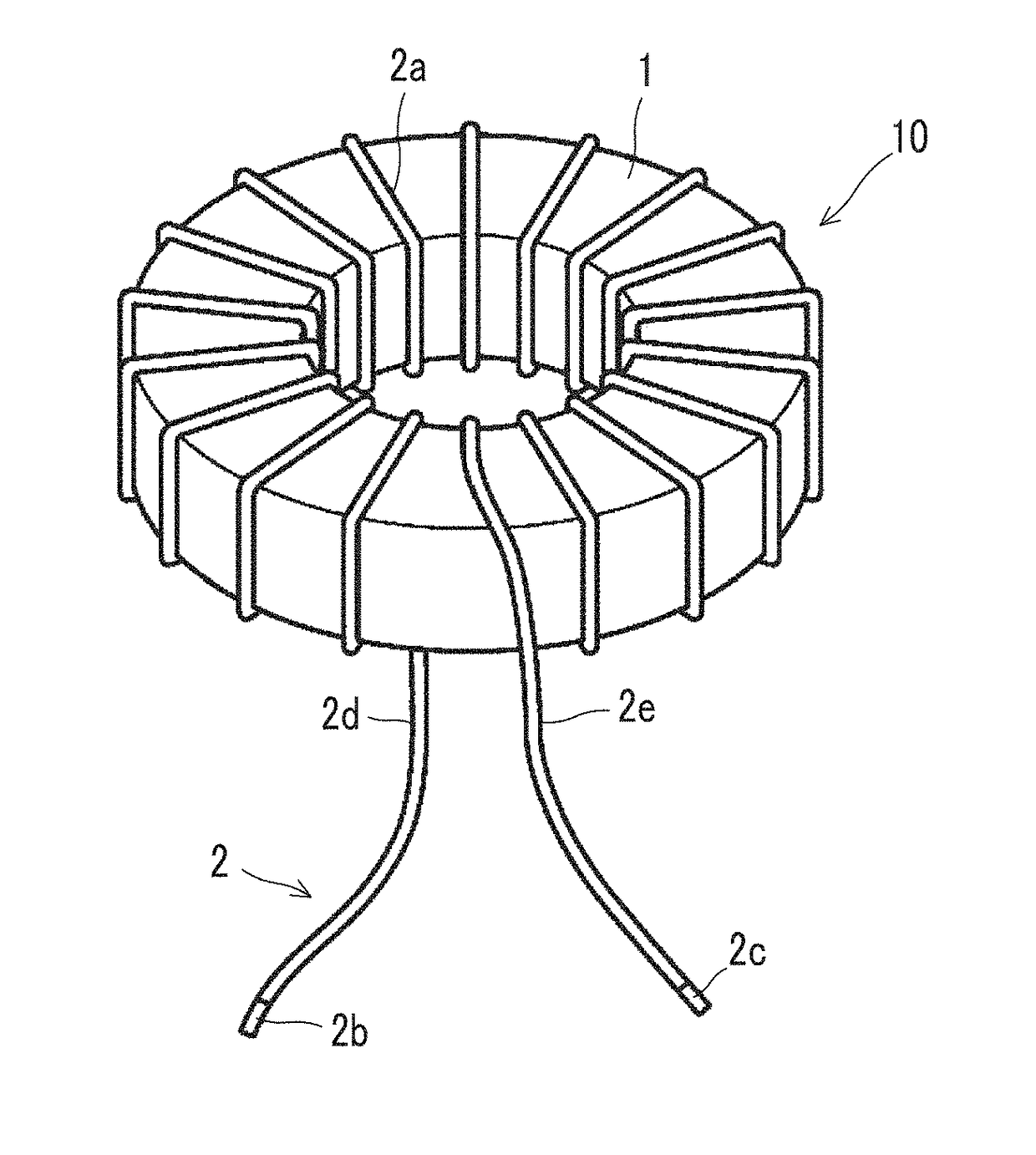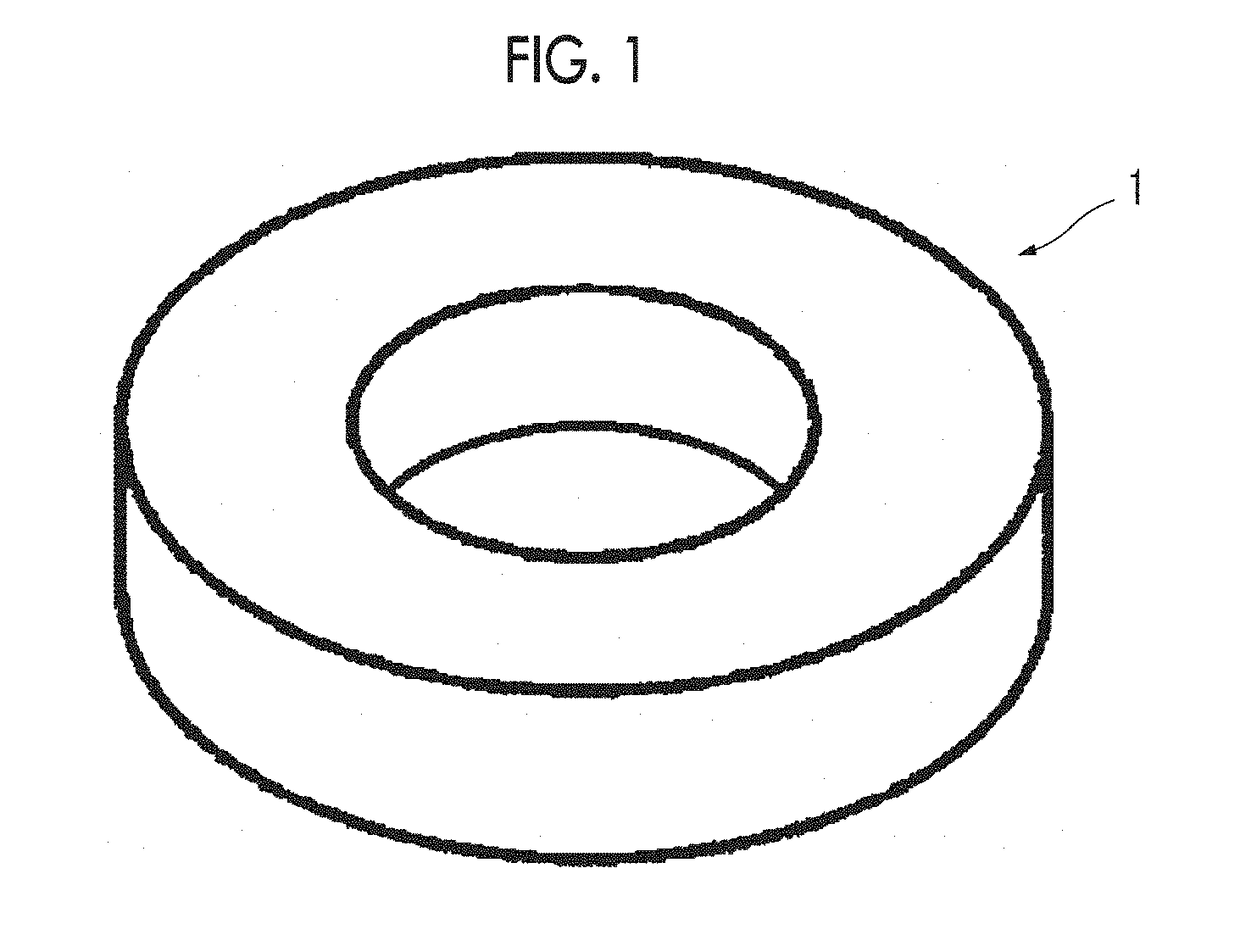Powder core, manufacturing method of powder core, inductor including powder core, and electronic/electric device having inductor mounted therein
a manufacturing method and powder core technology, applied in the direction of cores/yokes, inductances, magnetic bodies, etc., can solve the problem of not performing dc superposition characteristics evaluation, and achieve excellent dc superposition characteristics, low loss, and easy to cope with a high current
- Summary
- Abstract
- Description
- Claims
- Application Information
AI Technical Summary
Benefits of technology
Problems solved by technology
Method used
Image
Examples
embodiments
[0110]Hereinafter, the present invention will be described in more detail with reference to examples and the like, but the scope of the present invention is not limited to the examples and the like.
example 1
Production of Fe-Based Amorphous Alloy Powder
[0111]Raw materials were weighed so as to achieve a composition of Fe71 at % Ni6 at % Cr2 at % P11 at % C8 at % B2 at %, and powders of five types of amorphous magnetic material (amorphous powders) having different particle size distributions were produced using a water atomization method. The particle size distributions of the powders of the obtained amorphous magnetic materials were measured as volume-based distributions using “Microtrac particle size distribution measuring apparatus MT3300EX” manufactured by Nikkiso Co., Ltd. The particle size (median diameter) D50A at 50% on a cumulative particle size distribution from the small particle size side in the volume-based particle size distribution was 5 μm. In addition, as a powder of a crystalline magnetic material, a powder which is made of a Fe—Si—Cr alloy, specifically, an alloy having a Si content of 6.4 mass % and a Cr content of 3.1 mass % and including Fe and impurities as the rem...
examples 2 to 10
[0124]As shown in Table 3, using magnetic powders in which the particle size of a powder of an amorphous magnetic material, the composition of a powder of a crystalline magnetic material, a surface treatment, and a particle size are different from those of the magnetic powders used in Example 1, toroidal cores including powder cores were obtained in the same manner as in Example 1. In addition, the powder of the amorphous magnetic material used in Example 10 was produced by an atomization method in which gas atomization and water atomization are continuously performed. The column of D50C in Table 3 displays the particle size (median diameter, unit: μm) which is at 50% on a cumulative particle size distribution from the small particle size side in a volume-based particle size distribution obtained by measuring the particle size distribution of the powder of the crystalline magnetic material as a volume based distribution using “Microtrac particle size distribution measuring apparatus...
PUM
 Login to View More
Login to View More Abstract
Description
Claims
Application Information
 Login to View More
Login to View More - R&D
- Intellectual Property
- Life Sciences
- Materials
- Tech Scout
- Unparalleled Data Quality
- Higher Quality Content
- 60% Fewer Hallucinations
Browse by: Latest US Patents, China's latest patents, Technical Efficacy Thesaurus, Application Domain, Technology Topic, Popular Technical Reports.
© 2025 PatSnap. All rights reserved.Legal|Privacy policy|Modern Slavery Act Transparency Statement|Sitemap|About US| Contact US: help@patsnap.com



